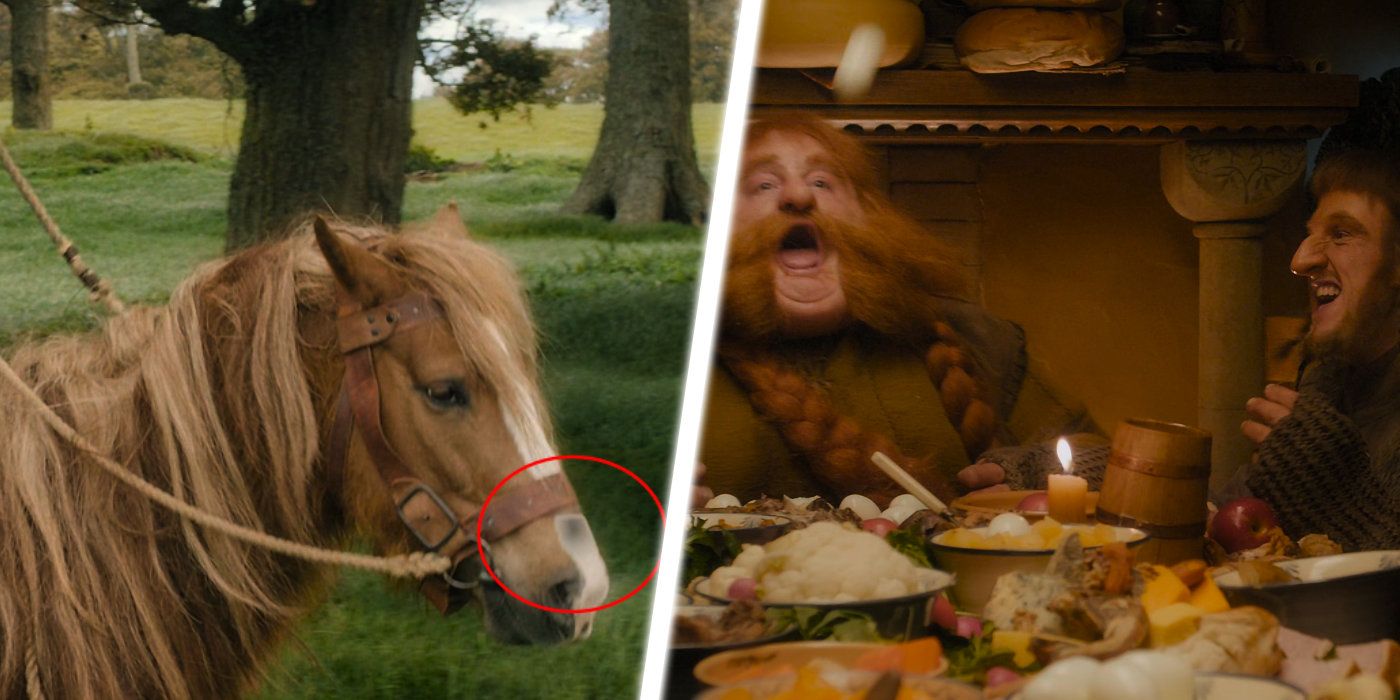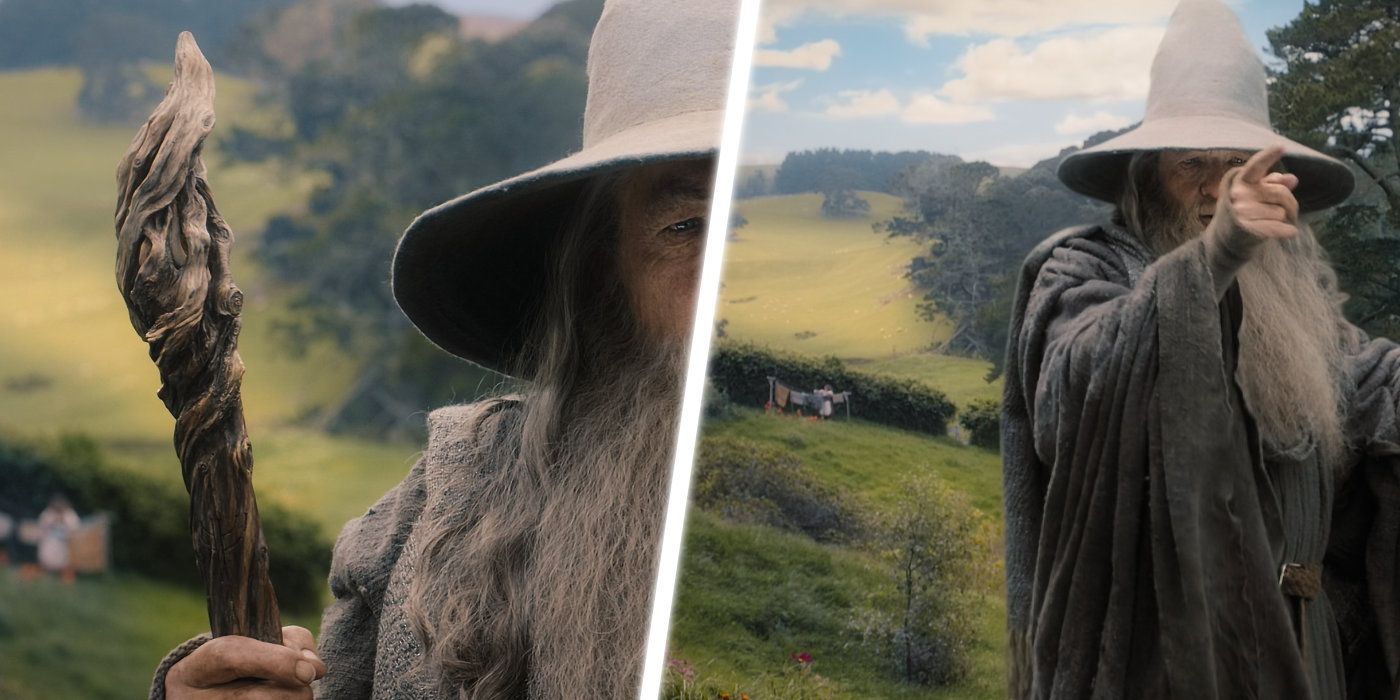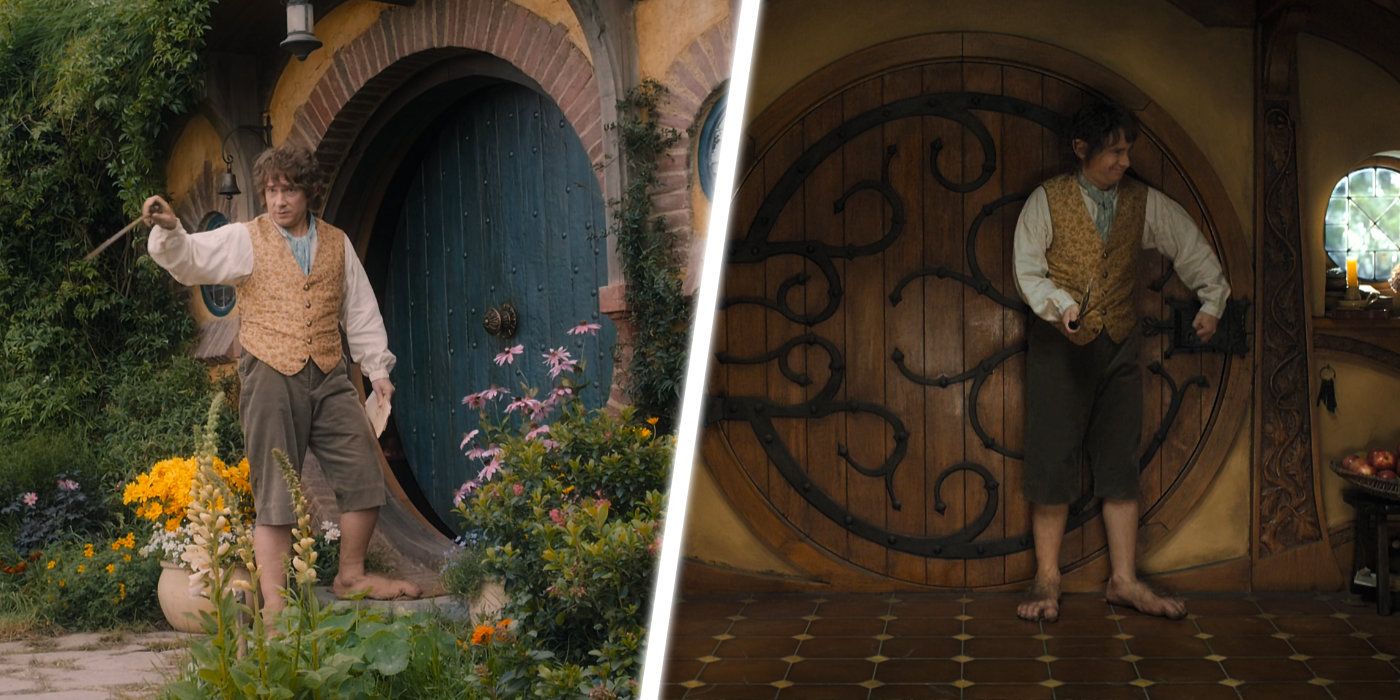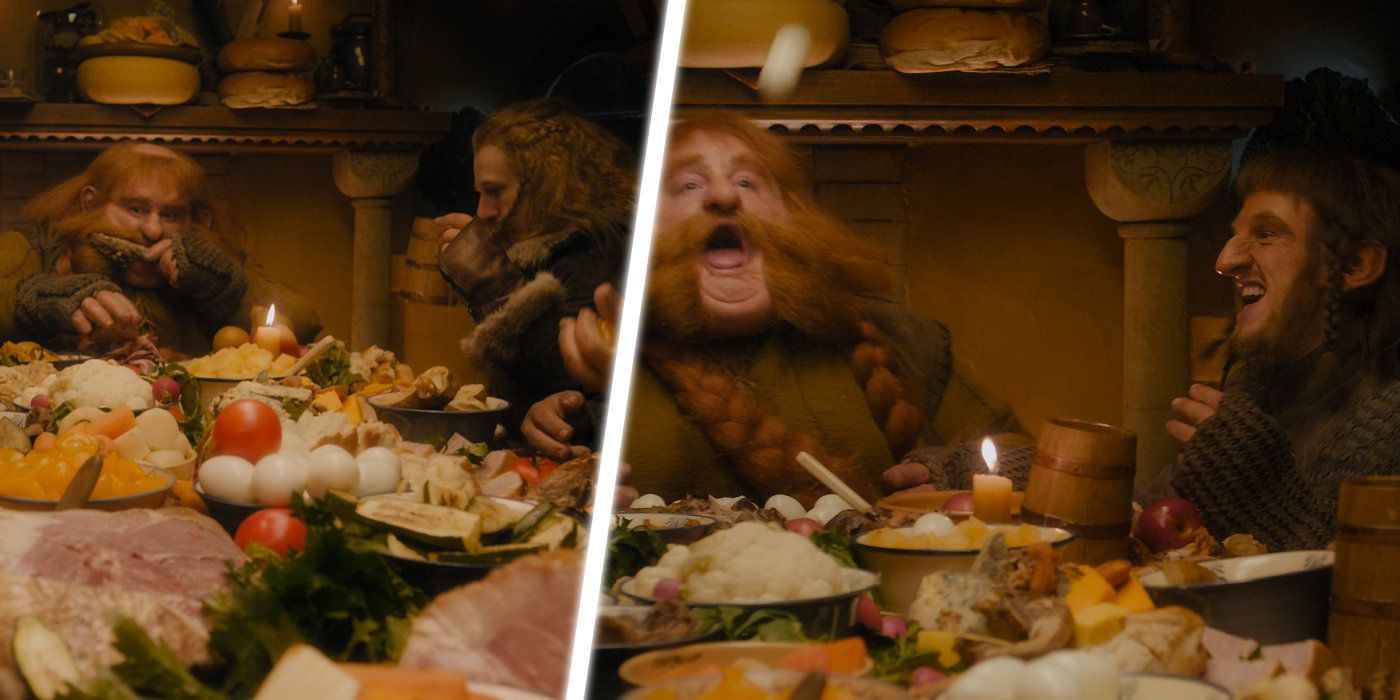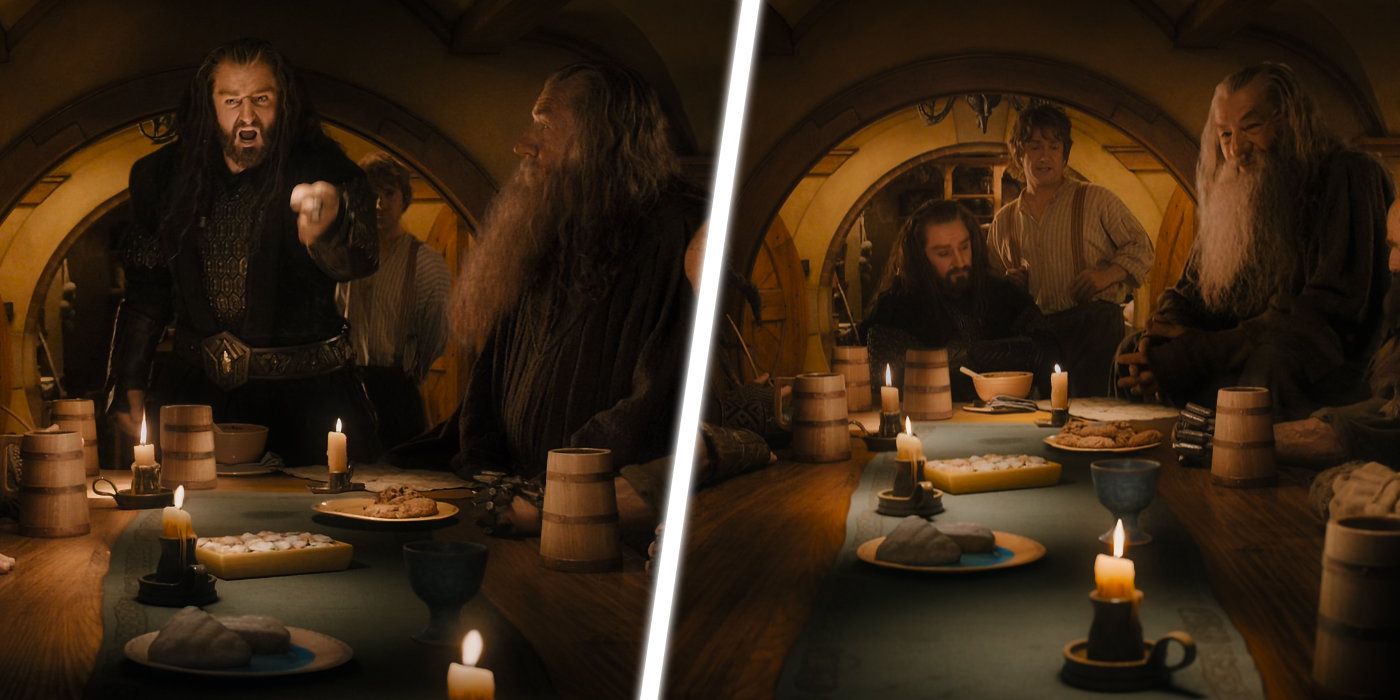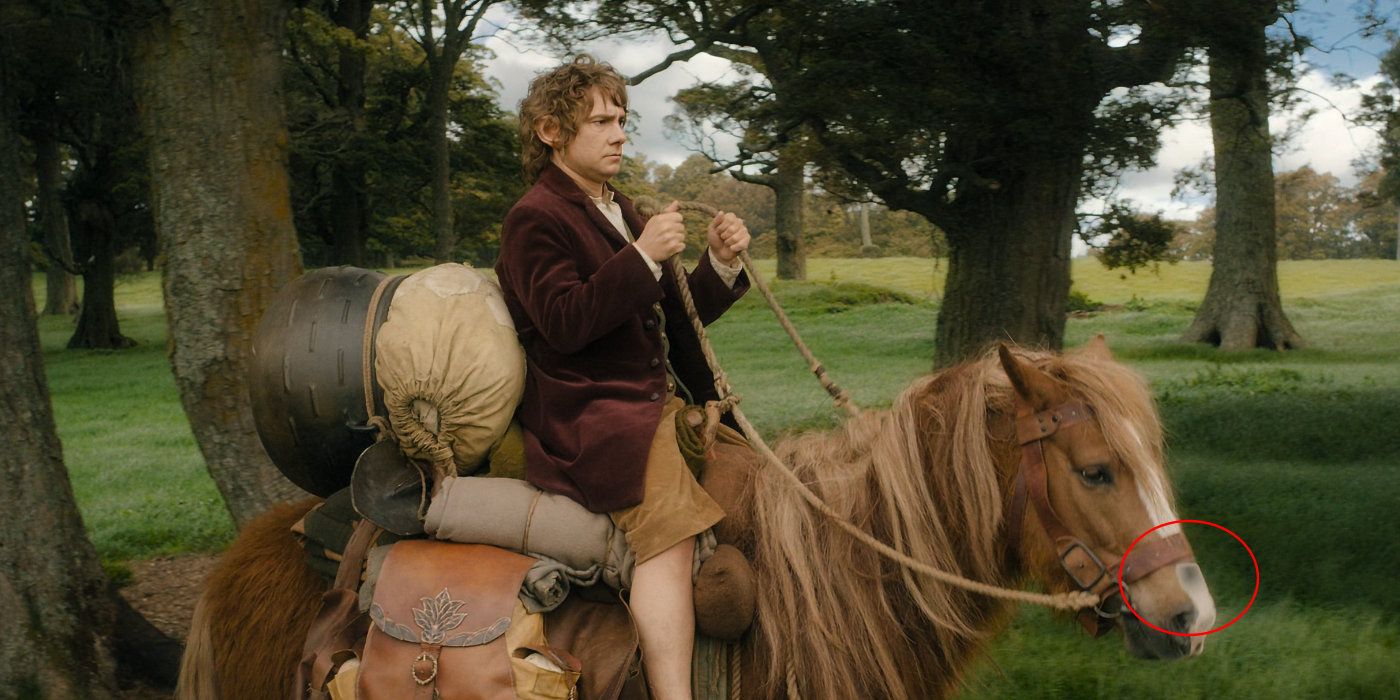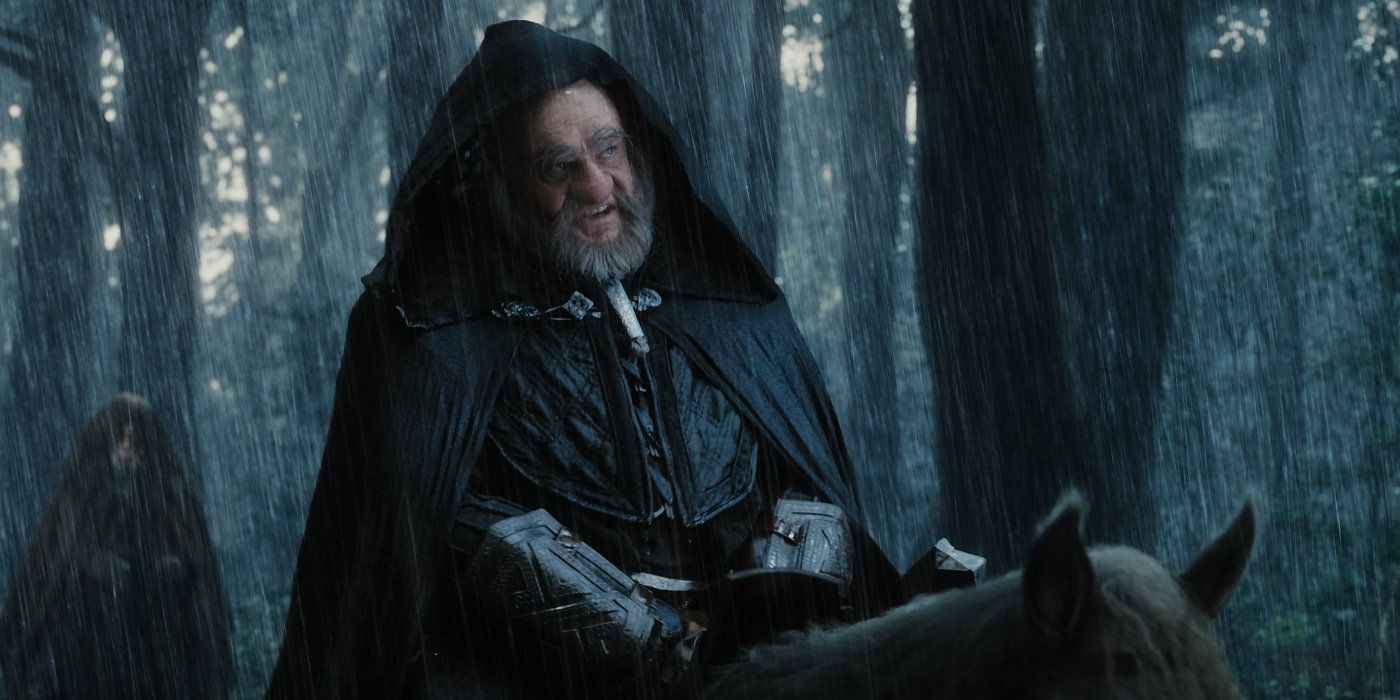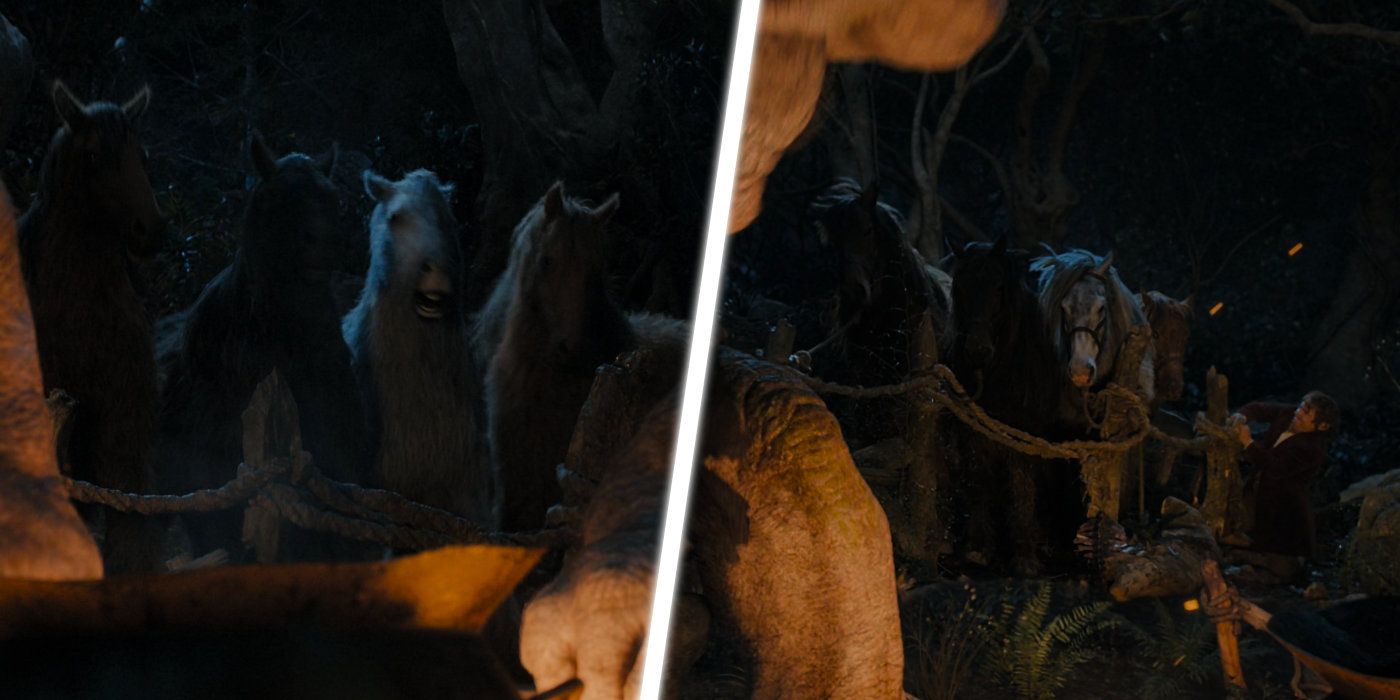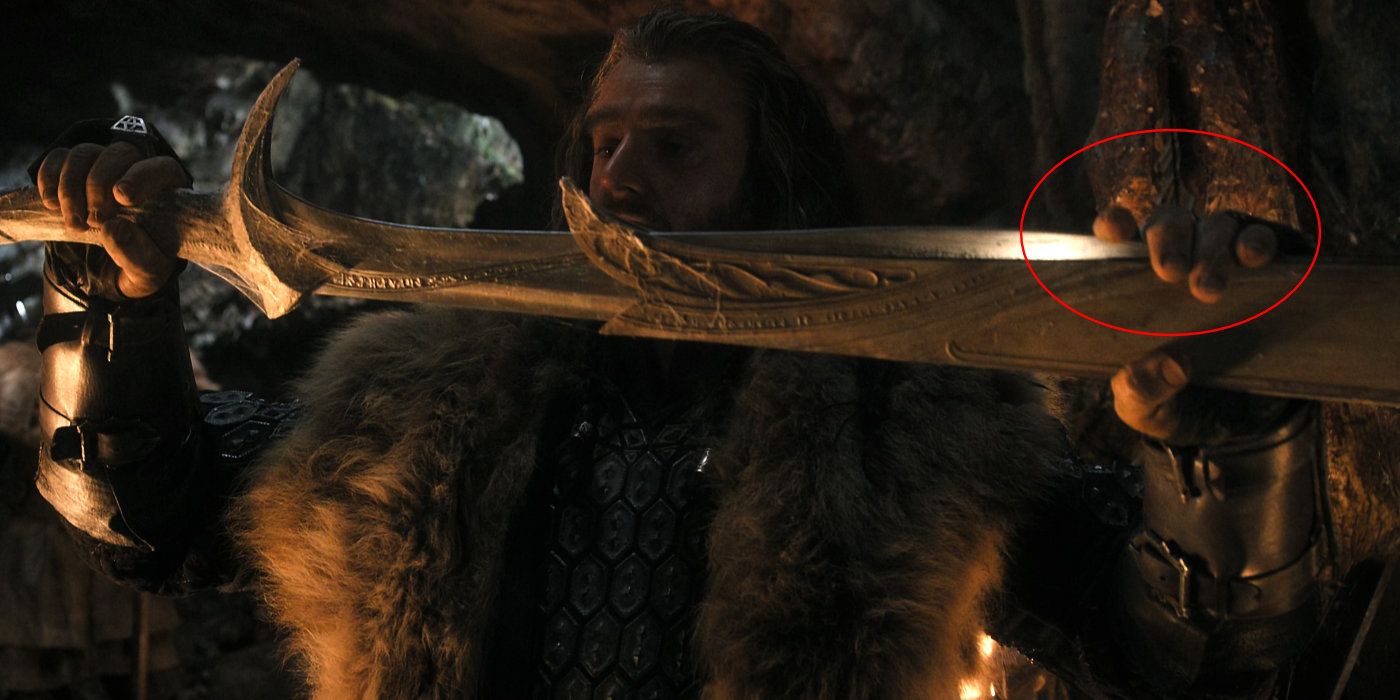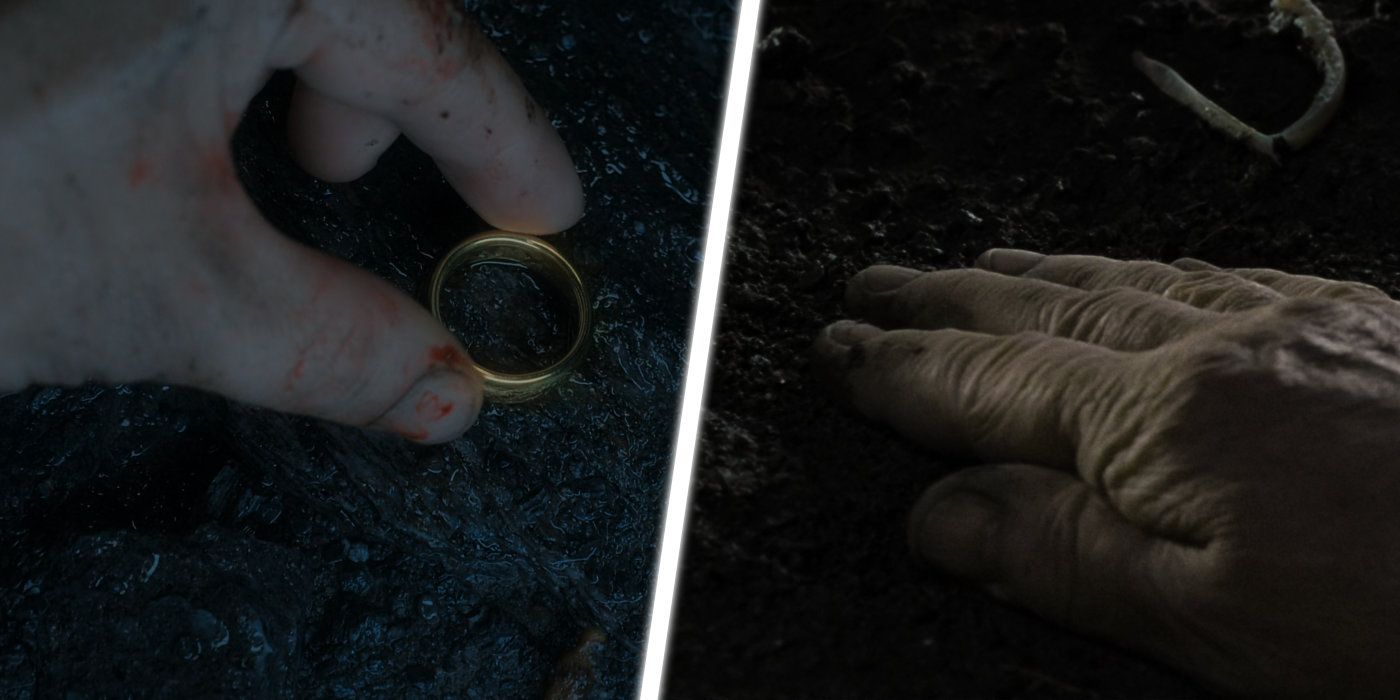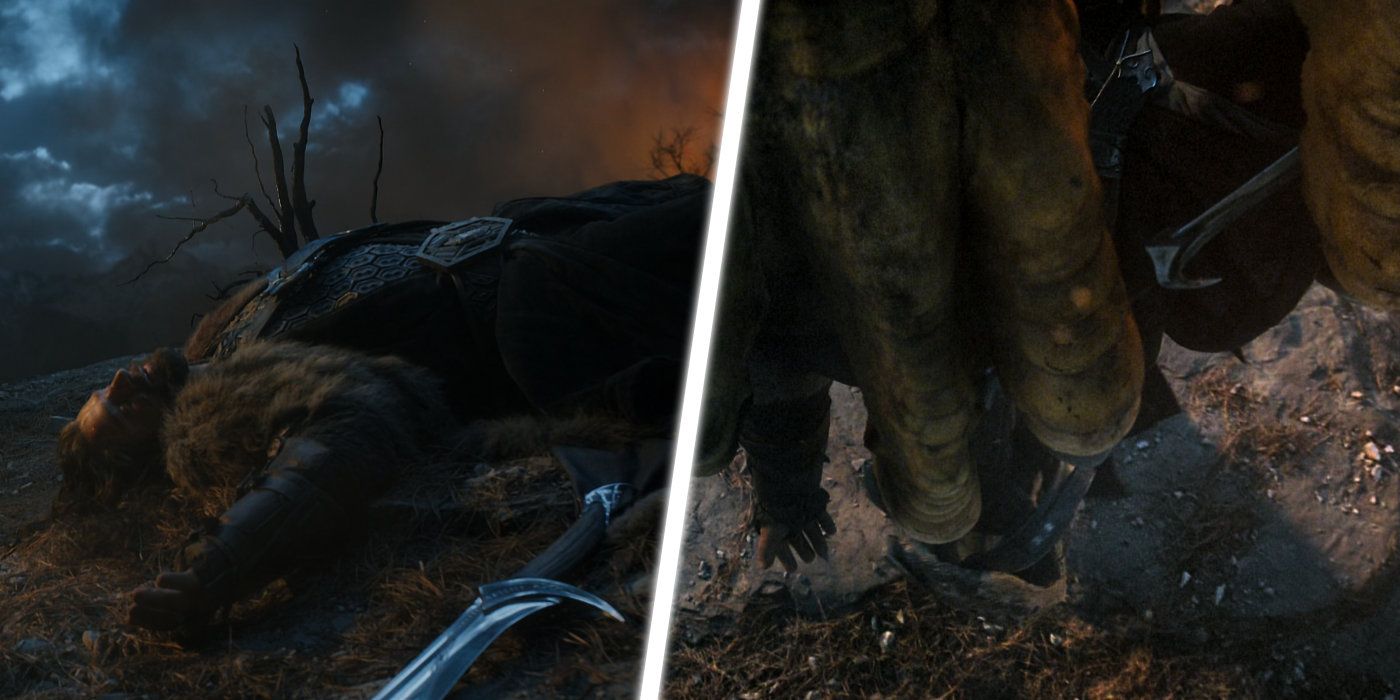When versatile and ambitious director Peter Jackson filmed the original Lord of the Rings trilogy across the span of multiple years, it proved to be a monumental undertaking. The end result was a breathtaking spectacle of cinema that did for its generation what Star Wars had done for the prior. Adventure, excitement, and escape were part of movies again, and that was something to celebrate.
Jackson followed it up years later with the less-successful Hobbit trilogy which divided many LOTR fans in terms of its quality. Both trilogies were ambitious beyond compare, and that meant both had some glaring, and rather amusing mistakes that made it into the final cuts. Here are ten of the funniest that escaped the eagle-eyed director and editor in The Hobbit: An Unexpected Journey.
The Shifting Clothesline
Following the lengthy prologue at the beginning of the film, audiences were brought back to the charming paradise of Hobbiton years before the original and iconic Lord of the Rings trilogy. It began in similar fashion, with Gandalf the Grey rolling up on an unexpecting Bilbo Baggins.
The two end up taking their initial conversation to the front door of Bag-End. In the background, a Hobbit woman is busy putting up clothes on a line to dry out. However, the position of the clothes keeps darting around the line, depending on the shot. It's easy to miss, but no less amusing if one knows what to watch out for.
The Impossible Door Lock
Bag-End is as charming a home as one could possibly hope for, and many Tolkien fans would take on two mortgages to own just one. It's snug, cozy, and brimming with a fantasy allure that cannot be overstated. Unfortunately, not a lot of thought was put into the locking mechanism on the front door.
From the outside, the door handle is dead center, but there's no equivalent on the inside. Even more puzzling is the locking mechanism, which in no way leads to the center of the door, nor is there a visible mechanism on the outside. This makes the question of how Bilbo keeps Bag-End secure all the more interesting.
The Old Switcheroo
One of the most notoriously risky aspects of shooting a film is the pickups. These involve shooting a portion of a scene before pausing, and picking up where the filming left off. Oftentimes this is due to scheduling, such as shooting a scene across the span of multiple days. This leaves things wide open for continuity errors.
A big one pops up when the loud and talkative dwarves show up at Bag-End and have a sit down at the table to eat. Bombur sits at the head of the table with Fili to his exact right, but seconds later, Bofur tosses an egg at him, which he catches in his mouth. To his exact right now sits Ori, which is a rather large goof.
Magic Cookies
Another example of a botched pickup shot is shown in the Bag-End scene when Thorin addresses the company and rouses them with a speech about taking back their home. If one looks to the lower right, the amount of cookies on the plate is diminished. Moments later, Gandalf picks up where Thorin left off by talking about the need for stealth and courage during the mission.
Bilbo chimes in at this point in a wide shot of the table. The cookie plate seems to have magically refilled back up to the brim, with no one having done the deed. It's these small errors that sometimes go unnoticed, but when pointed out, they stick out like a sore thumb.
It Isn't Easy Being Green
In the beginning act of the film, Bilbo rushes after the company with his signed contract, ready to start on his adventure. To keep up, he's given a pony under Thorin's direction, which he is a little reluctant to accept. The first shot of him riding the pony reveals a visual effects error that made it into the final film.
If fans look closely, they can see a portion of the horse's nose disappear as it rears up its head. Later, the effect goes away. This is due to chroma-keying, a technique visual effects artists use to delete a green screen background in order to inject a different one. Chroma-keying works on tolerance percentages. Too little, and the green is not fully removed. Too high, and it begins to affect secondary colors, rendering them transparent.
The Semi-Drenched Company
Shortly after setting out from Bag-End on their adventure, Gandalf, Bilbo, and the Dwarves are seen riding across the countryside in the middle of a torrential downpour. Gandalf is asked whether he can utilize his mysterious and powerful abilities to affect the weather and bring an end to the storm.
The shot feels highly unrealistic from a visual standpoint. The characters look wet, but not from the rain itself. It's as if they were made wet in order to simulate being rained on. Rain droplets are not shown bouncing off their costumes, or running off the tip of Gandalf's hat. It's not entirely convincing a shot.
Unbridled
The troll scene is one of the most famous in the film, primarily because it links directly back to the first Lord of the Rings chapter where the Hobbits and Aragorn give pause after Frodo is stabbed with a Morgul blade. It's also notorious for a subtle, yet very big goof involving the horses.
When we first see the horses put into a pen by the trolls, they are unbridled and unattached to the post. Yet, when Bilbo tries to free them, the horses are bridled and tied. This is most noticeable when the scene shifts from CGI horses to real ones.
Thorin Nearly Loses His Fingers
Thorin Oakenshield is well known for possessing the Elven blade known as Orcrist, which is shown in spectacular glory in the film when the company finds a treasure trove containing riches and weapons. However, the fact that he almost loses all of his fingers after picking it up is a rather shocking goof that should never have made it into the film.
Since Orcist is shaped so that the latter half of the blade is wider than the former near the hilt, this means the scabbard must be partially cut open to allow it to be drawn. Thorin grabs the blade in the middle of the scabbard where the blade is protruding, and pulls it out. This would be considered extremely dangerous and foolish.
Inconsistent Beginnings
One of the most difficult aspects of adapting The Hobbit after the iconic Lord of the Rings trilogy was the impossibility of original Bilbo Baggins actor Ian Holm to reprise his role. As a result, Martin Freeman ended up playing the character, and that meant revisiting that pivotal scene where he uncovers the One Ring in the depths of Gollum's Lair.
Unfortunately, there was no attempt to maintain continuity with the opening prologue of Fellowship of the Ring, specifically the part where Bilbo finds the One Ring. Both versions of the character even pick it up with opposite hands - Freeman with his left, and Holm with his right.
Convenient Swords
In the final act of the film when Azog and his minions attack the company, Thorin is left unconscious on the ground with the rest in serious jeopardy. Gandalf manages to summon the Eagles at the last moment to attack Azog's war party, while rescuing the company from the clutches of death.
When one Eagle arrives to pick up Thorin in its talons and fly off, his sword Orcrist is shown against his body. However, when Thorin was originally knocked to the ground, Orcrist was separated from his body. It is possible he somehow managed to grab and clutch the sword to his body, but this is highly unlikely.

